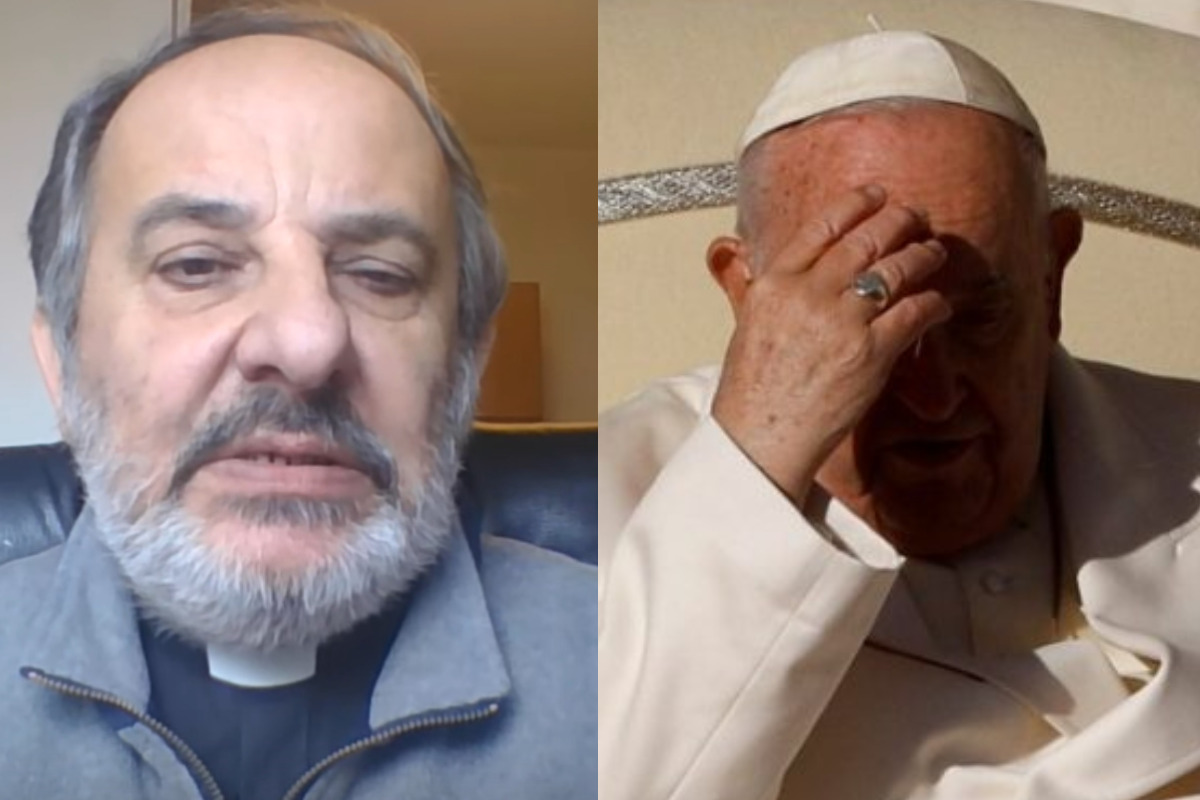The Papal Conclave: A Detailed Explanation Of The Election Process

Table of Contents
The Prerequisites for a Papal Conclave
The Papal election process doesn't begin spontaneously. Several key prerequisites must be met before the conclave can commence. Understanding these foundational elements is crucial to appreciating the overall procedure.
The Death or Resignation of a Pope
The Papal Conclave is triggered by the death or resignation of the reigning Pope. This event sets in motion a series of precise procedures.
- Official Announcement: The death or resignation is officially announced to the world, marking the beginning of the sede vacante (vacant see) period.
- Sede Vacante: During this period, the governance of the Church falls under the temporary authority of the College of Cardinals.
- The Cardinal Camerlengo: The Cardinal Camerlengo, a senior cardinal, assumes responsibility for the temporal affairs of the Vatican City State and the Holy See until a new Pope is elected. His role is critical in managing the transition.
The Role of the Cardinals
The electors in a Papal Conclave are Cardinals, but not all Cardinals are eligible to participate. Specific criteria govern who can cast a ballot.
- Under 80 Years of Age: Only Cardinals under the age of 80 at the time of the Pope's death or resignation are eligible to vote. This rule ensures a balance between experience and the potential for a long papacy.
- Appointed by a Previous Pope: Cardinals must have been appointed by a previous Pope to be considered eligible voters. This aspect reinforces the hierarchical structure within the Church.
- Pre-Conclave Preparations: Eligible Cardinals play a vital role in the pre-conclave preparations, including the selection of the Camerlengo and the logistical organization of the conclave itself. Their responsibility extends far beyond the voting process.
The Preparation for the Conclave
The logistical and security aspects surrounding the Papal Conclave are meticulously planned to ensure the smooth and secret operation of the election.
- Securing the Sistine Chapel: The Sistine Chapel, the venue for the conclave, undergoes rigorous security checks and preparations. It is thoroughly secured to guarantee privacy and prevent interference.
- Accommodation for the Cardinals: Suitable accommodation is provided for the Cardinal electors, typically within the Vatican walls, maintaining their isolation and focus on the election.
- Communication Restrictions: Communication restrictions are implemented to prevent external influence or manipulation of the voting process. The cardinals are largely isolated from the outside world.
The Conclave Process Itself
Once the preparations are complete, the conclave itself begins, a process rich in symbolism and tradition.
The Opening Ceremonies
The opening ceremonies mark the formal commencement of the conclave, initiating a period of intense reflection and deliberation.
- The Oath of Secrecy: Before the voting commences, each Cardinal elector takes a solemn oath of secrecy, promising confidentiality regarding the proceedings and the identities of those who received votes.
- Final Preparations: The Sistine Chapel undergoes a final check to ensure all necessary equipment and materials are in place for the voting.
- Closing of the Conclave: Once the oath is taken and the preparations are complete, the Sistine Chapel is sealed, effectively isolating the Cardinal electors.
The Voting Process
The voting process is designed to be fair, secret, and transparent in its outcome, though the specific choices remain confidential.
- Secret Ballot System: Cardinals cast their votes using a secret ballot system, preventing any coercion or external influence on their choice.
- Role of Scrutineers: Two scrutineers, Cardinals selected by lot, assist in collecting, counting, and verifying the votes, ensuring the integrity of the process.
- Counting of Votes: The votes are counted and the results are announced to the participants, but the identity of individual votes remains undisclosed.
- Two-Thirds Majority: A two-thirds majority is required to elect a new Pope. If this majority is not reached, further ballots are held until a Pope is chosen.
Addressing Impasses
If a two-thirds majority is not achieved after multiple ballots, procedures are in place to manage potential impasses.
- Potential for Compromise: Continued ballots often lead to discussion and compromise among the Cardinals, as they weigh the strengths and weaknesses of various candidates.
- Adjustments to Voting Procedures: In exceptional circumstances, adjustments to voting procedures might be considered, though this remains rare.
- Length of the Conclave: The conclave can continue for an extended period until a Pope is elected. This demonstrates the determination to reach a consensus.
Announcing the New Pope
The culmination of the Papal Conclave is the announcement of the new Pope, a moment of immense significance.
The "Habemus Papam!"
The announcement of the new Pope is a highly anticipated event, marked by specific traditions.
- Burning of the Ballots: Once a two-thirds majority is reached, the ballots are burned, producing white smoke as a signal to the world.
- White Smoke Signal: The white smoke, visible from the Sistine Chapel chimney, signifies the election of a new Pope. Black smoke indicates the absence of a majority.
- Formal Announcement: The new Pope is formally announced from the balcony of St. Peter's Basilica, with the traditional words, "Habemus Papam!"
The Inauguration and Papal Name
Following the announcement, the newly elected Pope embarks on his papacy, choosing a new name and undergoing the inauguration ceremony.
- Papal Coronation (or Installation): The new Pope officially assumes his responsibilities through a formal coronation ceremony (or installation depending on the current practice).
- Selection of a Papal Name: The Pope chooses a papal name, often a name of significance from Church history or a name that reflects his vision.
- Beginning of the New Papacy: With the inauguration, the new Pope begins his leadership of the Catholic Church, shaping its future and guiding its millions of followers.
Conclusion
The Papal Conclave, a complex and fascinating process, showcases the Catholic Church's centuries-old tradition in selecting its leader. Understanding this intricate procedure provides valuable insight into the significance of the papacy and the cardinals' role in shaping the Church's future. For a deeper understanding of the Papal Conclave’s history and evolution, further research into Vatican archives and historical documents is highly recommended. Learning more about the intricacies of the Papal Conclave provides a richer appreciation of this significant event within the Catholic faith. To explore further aspects of this important process, delve deeper into the history of the Papal Conclave and its evolution.

Featured Posts
-
 From Criticism To Admiration How Julius Randle Won Over Timberwolves Fans
May 07, 2025
From Criticism To Admiration How Julius Randle Won Over Timberwolves Fans
May 07, 2025 -
 Simone Biles Debuts Dazzling Hair Makeover In Romantic Photos With Jonathan Owens
May 07, 2025
Simone Biles Debuts Dazzling Hair Makeover In Romantic Photos With Jonathan Owens
May 07, 2025 -
 Ke Huy Quan In The White Lotus Season 3 Debunking The Rumors
May 07, 2025
Ke Huy Quan In The White Lotus Season 3 Debunking The Rumors
May 07, 2025 -
 Ks Sliwinski O Konklawe Dlaczego Medialni Faworyci Rzadko Zostaja Papiezami
May 07, 2025
Ks Sliwinski O Konklawe Dlaczego Medialni Faworyci Rzadko Zostaja Papiezami
May 07, 2025 -
 Simone Biles Reports Harassment Nassar And Owens Involved In Text Message Threats
May 07, 2025
Simone Biles Reports Harassment Nassar And Owens Involved In Text Message Threats
May 07, 2025
